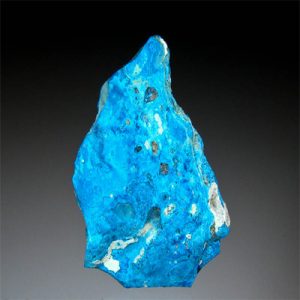Connellite
Connellite is a somewhat rare copper that is additional that is often connected with other copper minerals. It is found as radiating crystals that are acicular beautifully colored specimens with different shades of intense blue. Connellite crystals typlically have an acicular that is the unique fibrous habit but may also rarely be found as radiating inclusions in Quartz. Connellite is related to the mineral Buttgenbachite that is nitrate. The two minerals are isostructural and share the chemistry that is same. Connellite was named by James Dwight Dana in 1850 honoring Arthur Connell (30, 1794 – October 31, 1863), professor of chemistry at St Andrew’s University, Edinburgh, Scotland, whom first studied the mineral November.
Distribution: In England, within the Wheals Gorland, Unity, Edward, the Botallack mine, yet others in St. Just, and several other mines in Cornwall. At Southwick Cliffs, near Dalbeattie, Kirkcudbrightshire, Scotland. Within the Britannia mine, Snowdonia, Wales. At the Cap Garonne mine, near Le Pradet, Var, France. In the Sa Duchessa mine, Orissa district, Sardinia, Italy. From Laurium, Greece, in slag. At Fontana Rossa, Corsica, France. From Weibing, Salzburg, Austria. Within the Clara mine, Black Forest, Germany. In america, in Arizona, from a few mines at Bisbee and into the Toughnut mine, Tombstone, Cochise County; in Utah, from the Grand Central mine, Tintic region, Juab County and the Gold Hill mine, Tooele County. At Spring Creek and the Ediacara mine, Flinders Ranges, South Australia, and at Broken Hill, New South Wales, Australia. In the Marharahara mine, near Woodville, New Zealand. Increasingly recognized from other localities which are minor.
| Category: | Halide mineral |
| Chemical Formula: | Cu36(SO4)2Cl6(OH)62 • 6-12(H2O) |
| Hydrated Copper Sulfate Chloride Hydroxide | |
| Molecular Weight: | 2,043.53 gm |
| Composition: | Copper | 59.08 % | Cu | 73.96 % | CuO |
| Hydrogen | 1.87 % | H | 16.75 % | H2O | |
| Sulfur | 1.57 % | S | 3.92 % | SO3 | |
| Chlorine | 6.94 % | Cl | 6.94 % | Cl | |
| — | — % | Cl | -1.57 % | -O=Cl2 | |
| Oxygen | 30.53 % | O | |||
| 100.00 % | 100.00 % | = TOTAL OXIDE |
| Crystallography: | Hexagonal – Ditrigonal Dipyramidal |
| Crystal Habit: | As acicular prismatic crystals, elongated and striated || [0001], to 2.5 cm; commonly in tight radiating groups; fibrous, felted, or crusty aggregates. |
| Twinning: | None |
| Cleavage: | None observed |
| Fracture: | Splintery |
| Tenacity: | Brittle |
| Moh’s Hardness: | 3.0 |
| Density: | 3.36 – 3.41 (g/cm3) |
| Luminescence: | None |
| Radioactivity: | Not Radioactive |
| Other: | Soluble in acids and in ammonium hydroxide. Insoluble in water. |
| Color: | Blue, blue-green; blue in transmitted light |
| Transparency: | Transparent |
| Luster: | Vitreous |
| Refractive Index: | 1.724 – 1.758 Uniaxial ( + ) |
| Birefringence: | 0.014 – 0.026 |
| Dispersion: | n/a |
| Pleochroism: | None |


